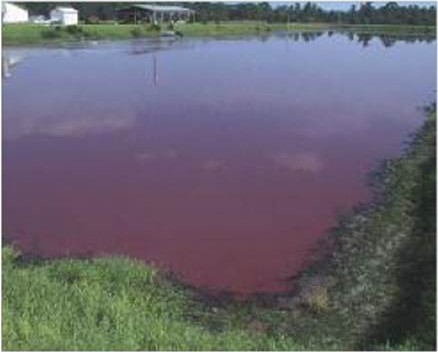Livestock Waste
The most pressing public health issue associated with CAFOs stems from the amount of manure they produce. The amount of manure production can range anywhere between 2,800 tons and 1.6 million tons per year. To put this into perspective, this amount of manure can exceed the amount of human waste output of U.S. cities. In fact, the Office of Government Accountability estimates that livestock animals in the U.S. produce somewhere between 3 and 20 times more manure than people in the U.S. produce each year as a whole. Unfortunately, livestock manure treatment plants do not exist. With such an overflow of manure, livestock are left standing ankle deep in their own waste as show in the image below. This, in turn, allows for manure to accumulate all over the animal's body, which presents a breeding ground for deadly pathogens such as Escherichia coli 0157:H7 to multiply and spread into the food and water system.
Manure Management Methods
The biggest challenge to manure management is keeping up with the overwhelming volume of manure being produced. The careful management and removal of this amount of waste is crucial to public health and preserving the environment. Unfortunately the current manure management methods are having a difficult time keeping up.
|
Current Manure Management Strategies |
Key Limitations |
|
|
Below is a guide developed by the National Association of Local Boards of Health developed to provide more information about CAFOs and their impact on communities.
Manure Contamination
 Huge lagoons of stored liquid manure can frequently spill into nearby groundwater sources, as well as contaminate fields of commercially raised vegetables and orchards during heavy rain. This produces not only a serious threat to drinking water, but also results in produce-associated contamination.
Huge lagoons of stored liquid manure can frequently spill into nearby groundwater sources, as well as contaminate fields of commercially raised vegetables and orchards during heavy rain. This produces not only a serious threat to drinking water, but also results in produce-associated contamination.
Pathogens have the ability to survive longer in groundwater than surface water due to lower temperatures and protection from the sun, and thus can become attached to sediment and become a lingering source of contamination for groundwater. Manure run off from leaks and overflow is a major concern to public health officials, and is one of the main sources of E.coli contamination in drinking water. The image (right) shows liquid manure being stored in an open-air reservoir, a common storage method for CAFOs.
Provided below is an audio interview by Dr. Dennis Maki, an epidemiologist and professor of medicine at the University of Wisconsin School of Medicine and Public Health. Dr. Dennis Maki explains how manure run off is resulting in contamination of E.coli in meat, vegetation, and groundwater. He suggests necessary steps to take in order to mitigate outbreaks of E. coli.

